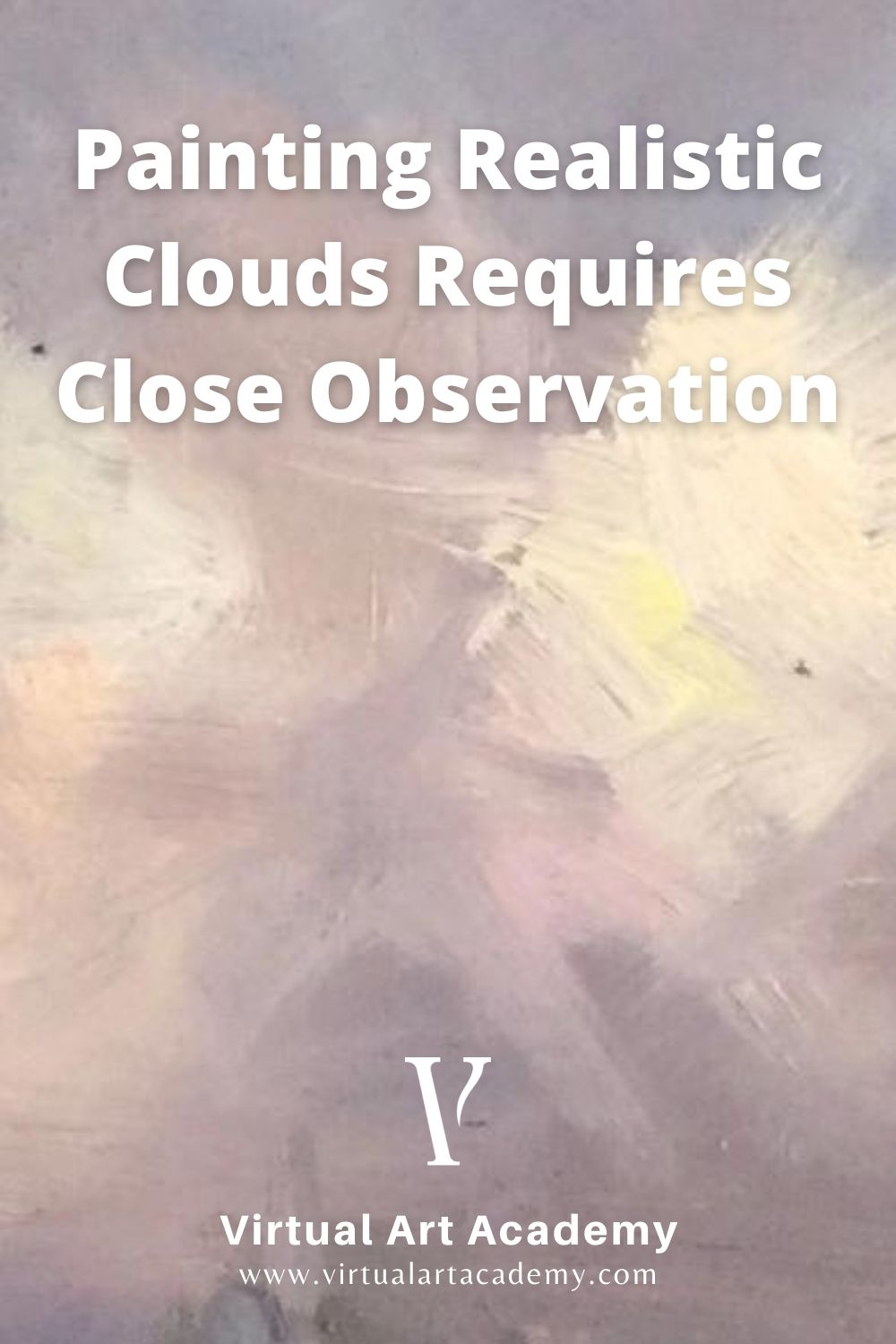
(Get free painting tips and plein air painting techniques sent straight to your inbox or on my social media.)
Clouds are the soul of a landscape painting. Here’s an article I wrote for the Virtual Art Academy® Artists Magazine on how to paint clouds successfully.
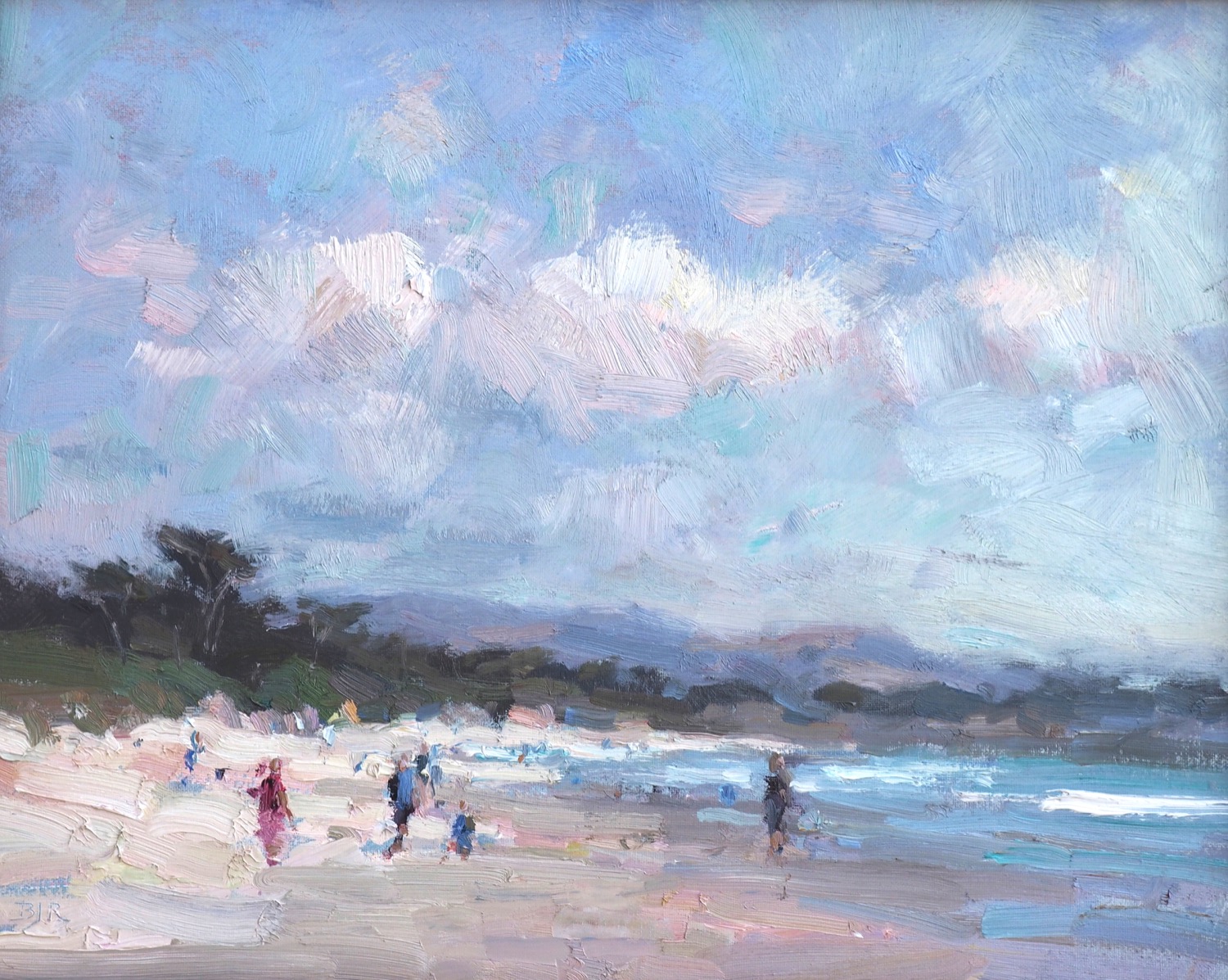
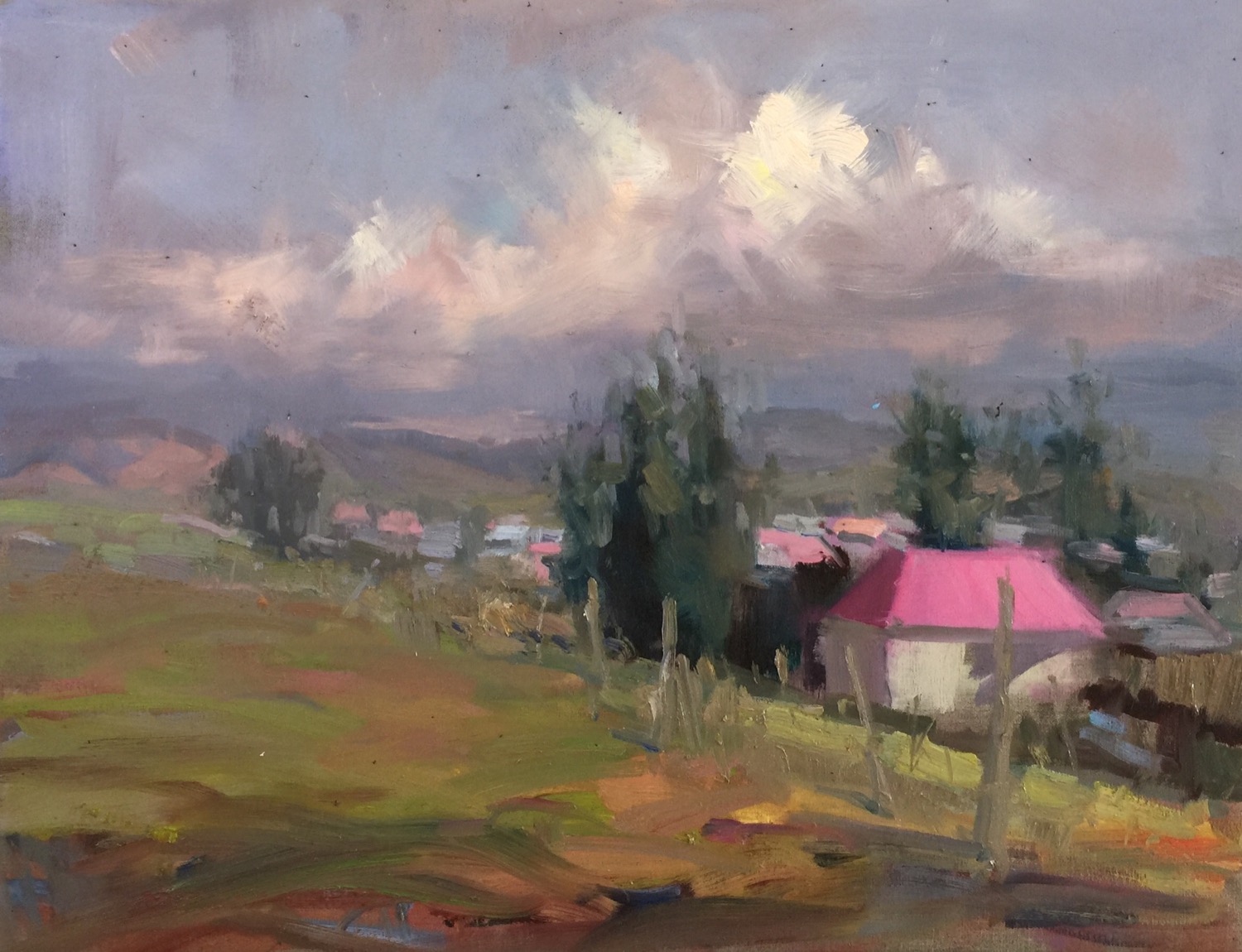
What you need to do when painting clouds
Accurate observation is the key to painting clouds in both oils and acrylics, as well as watercolors. This is the secret for how to create a realistic painting. Often you will want to alter reality, to maybe emphasize or de-emphasize certain aspects of reality to enhance your composition. But whatever you change, it is better if your changes are based on reality. To do this it is essential that you learn what to look for when you are painting clouds.
What to look for when observing a cloudy sky
When observing a cloudy sky here are some things to look for:
Tip#1: Shadow/sky value
When you are painting clouds, the value of the shadow part of the clouds compared to the value of the blue of the sky is important to convey the weather conditions. This will show whether the weather is fair, is about to start raining, or is in the midst of a heavy storm. In the above sky, you can see it is close to raining towards the right. If the shadow of the cloud is darker than the blue of the sky, this generally indicates a rainstorm approaching, and changes the mood of the sky.
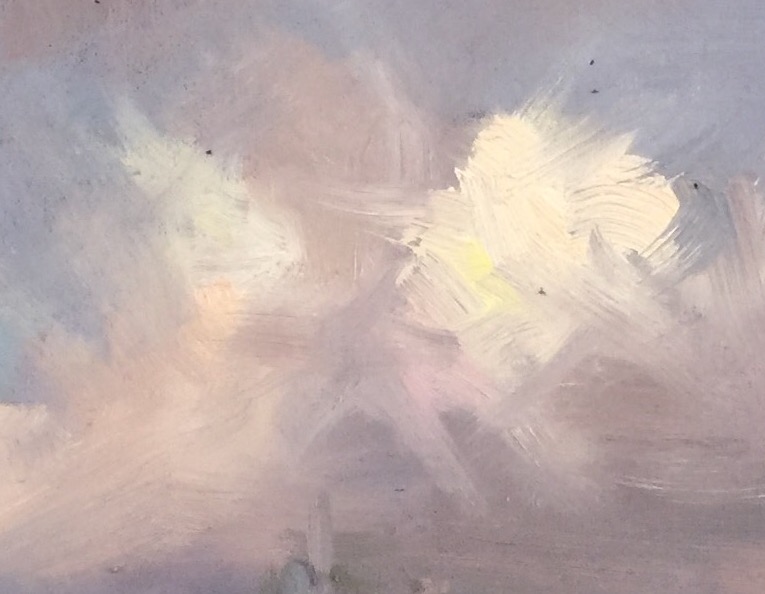
Tip#2: Shadow/halftone temperature
Look for a change in temperature in the half tone between the shadow and the lit side of the clouds. Notice how this temperature change becomes less distinct as you move further away into the distance.
The hue, value, and saturation of the shadow and lit side of the clouds change as they get further away from you and lower down in the sky. This is the same behavior you see in the color of any object in the light and shade (This subject is covered in the lessons on hue changes on a form in the Apprentice Program).
Tip#3: Vertical size change
As you move from the zenith of the sky to the horizon, the size of the clouds changes. This is an effect of perspective. You need to observe this change in size in order to capture the three-dimensional nature of the sky. Note the diminishing size of the baselines in the following cloud study by Isaac Levitan, one of the Russian Itinerant painters at the end of the 19th Century and one of my favorite landscape painters.
As you move from the zenith of the sky to the horizon, the size of the clouds changes. This is an effect of perspective. You need to observe this change in size in order to capture the three-dimensional nature of the sky. Note the diminishing size of the baselines in the following cloud study by Isaac Levitan, one of the Russian Itinerant painters at the end of the 19th Century and one of my favorite landscape painters.
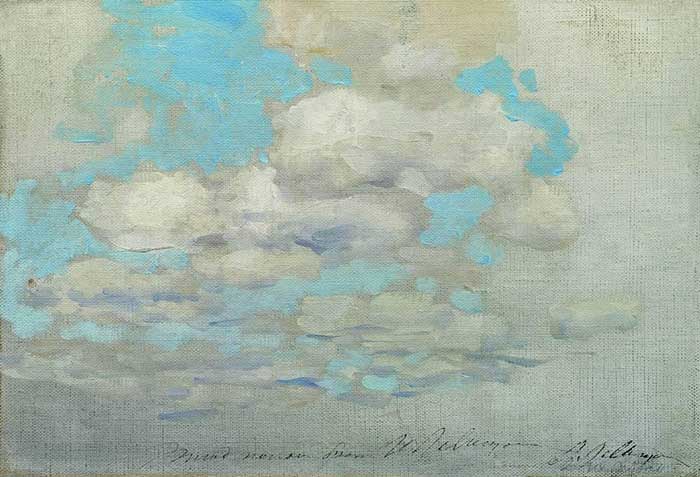
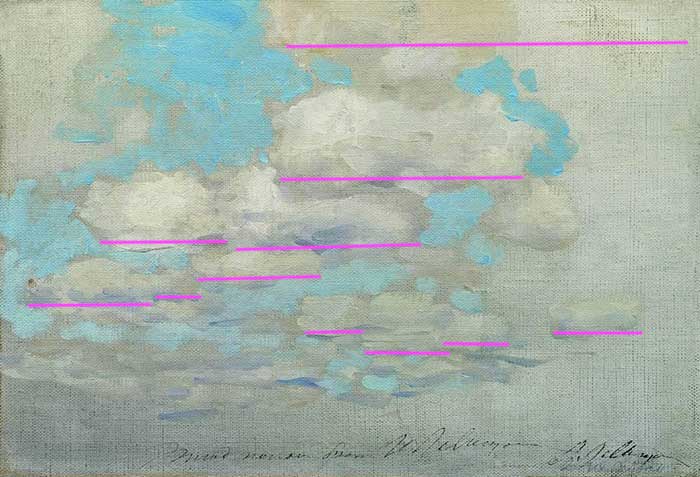
Close to the horizon, the clouds lose their identity as separate shapes.
More examples of painting clouds in oils, in the work of Barry John Raybould
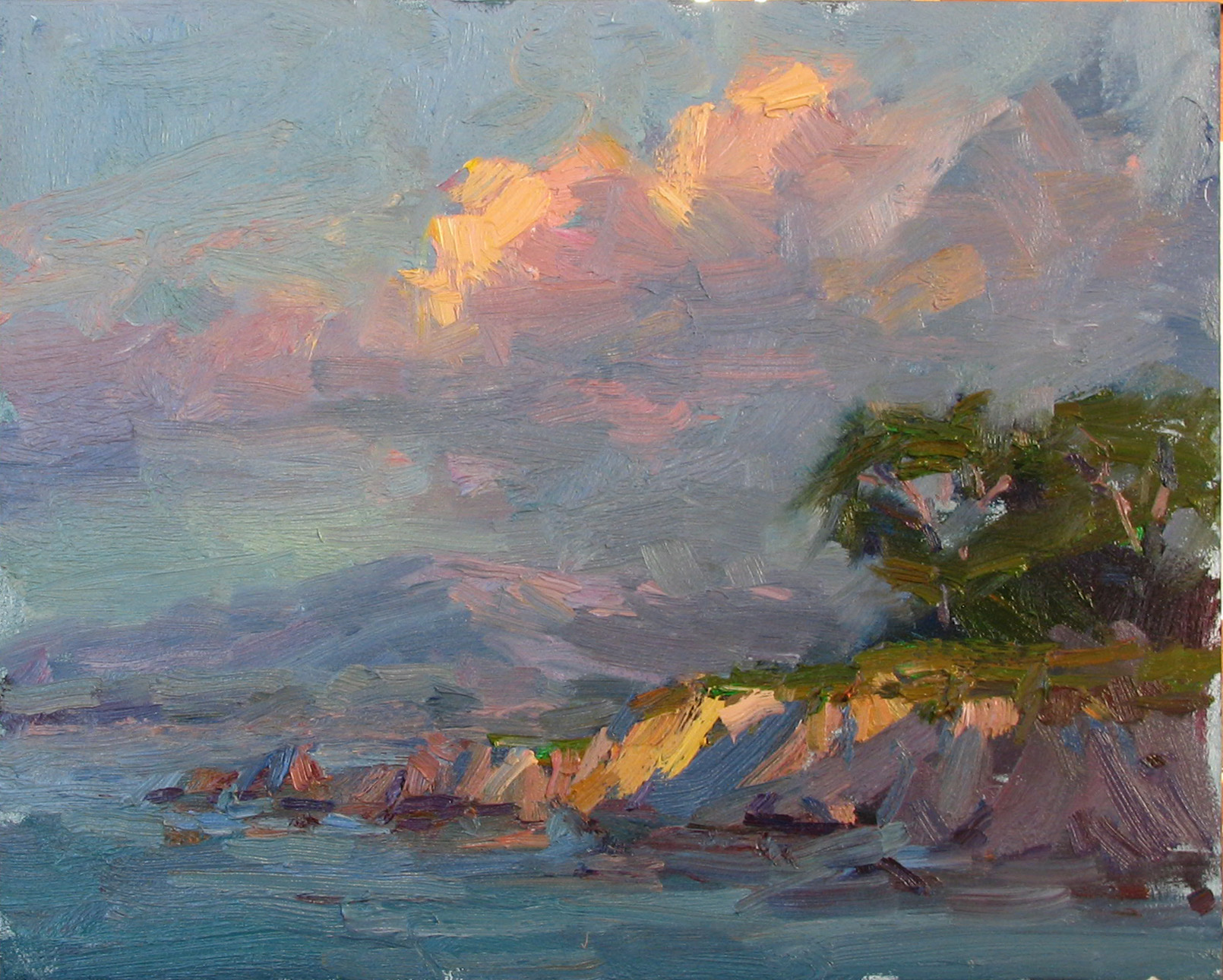
In the painting above, note how I shifted the color on the cloud from yellow in the lights, through reds in the half tones, to violets in the shadows.
Note how I used diminishing size to communicate the linear perspective of the clouds here. As the clouds recede, they get smaller. This effect of perspective is essential when painting clouds, whether you are painting clouds in oils, acrylics, or watercolors. It does not matter which medium you use. The same principles of nature always apply to painting clouds.
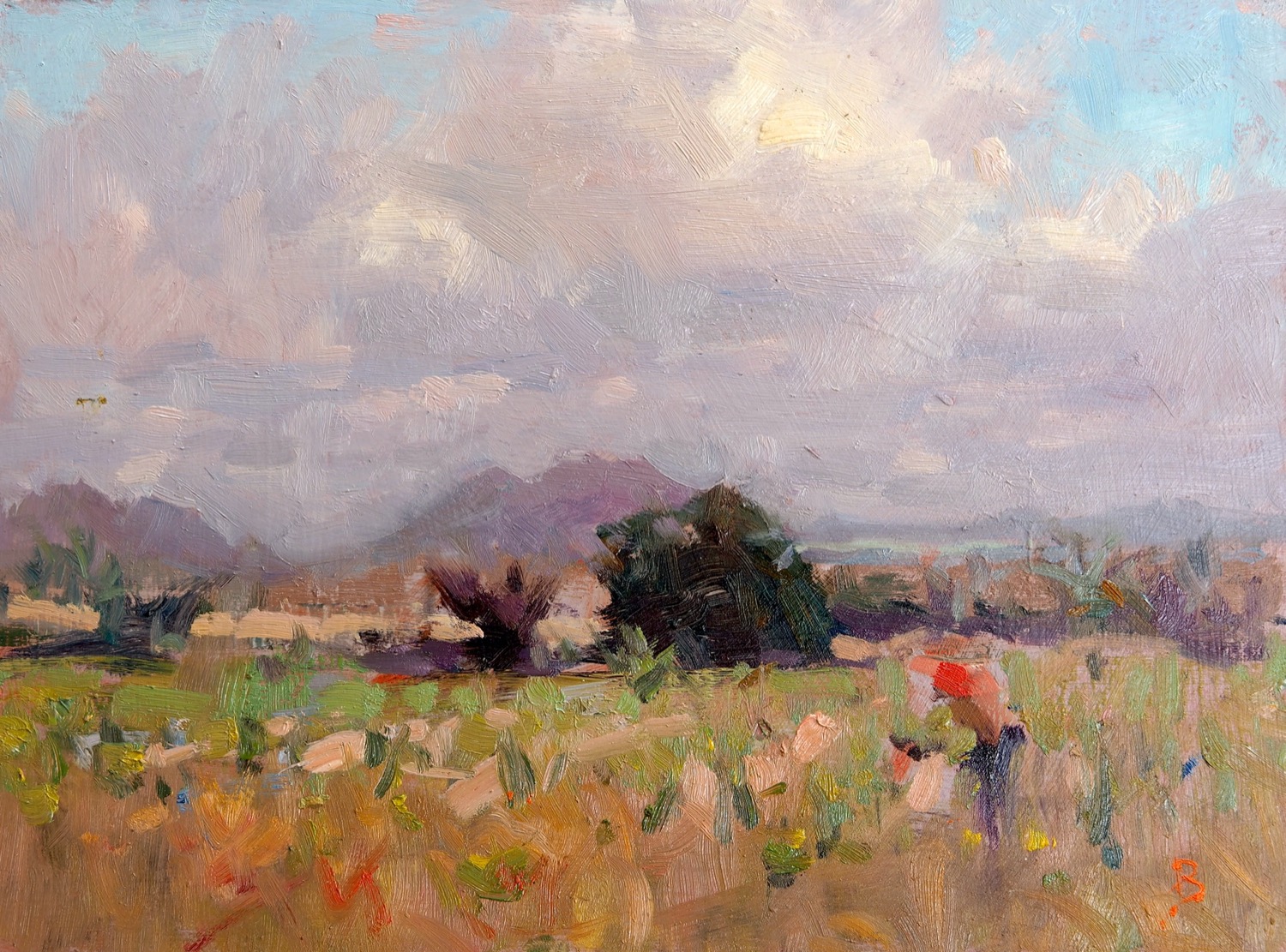
Here you can see I have used the value of the clouds to convey the weather conditions. The shadows of the clouds show that rain is about to fall.
Master and contemporary artist examples of painting realistic clouds
Here are some examples of how old and contemporary masters managed to perfectly capture clouds in their part of the world. Clouds can look very different depending on the meteorological conditions, so it is essential when you are painting clouds to accurately capture the local characteristics, or your painting will not look realistic. You cannot copy clouds painted by masters who live in different locations, but they can help you to break down their parts. Only by close observation of the clouds where you are painting will you be able to capture their unique shapes, colors, and sizes.
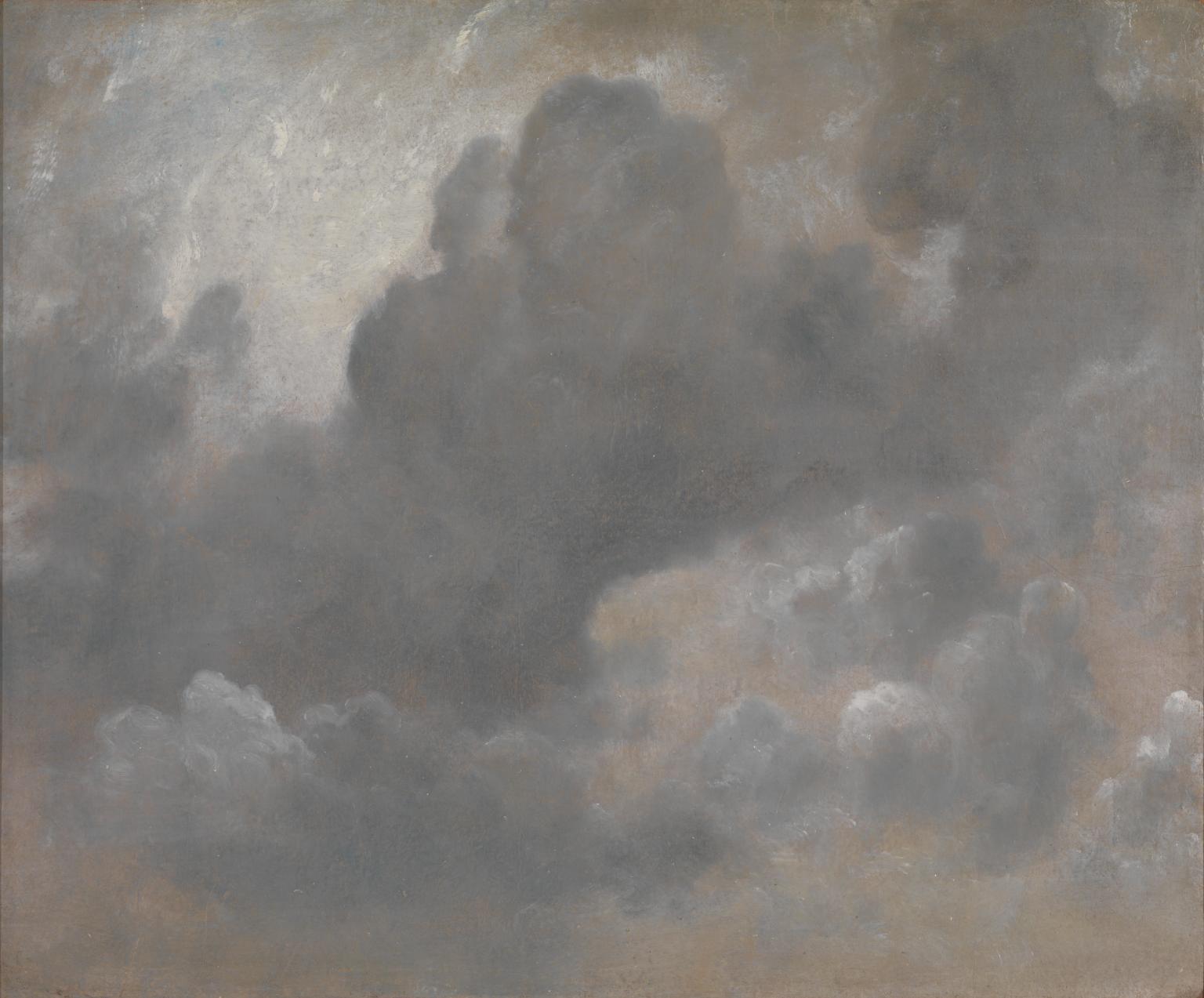
Constable’s oil studies of skies show a remarkable understanding of the structure and movement of clouds. Most also give a good impression of their three-dimensional volume.The studies vary in size. This is one of only four examples he painted on a larger format. The larger the scale the more difficult Constable found it to balance crispness of detail with speed of execution. This is why the larger cloud studies tend to be more generalized. The inscriptions on the back – ‘11 o’clock’ and ‘Noon’ – indicate that this study took him about an hour to paint.
Tate Britain
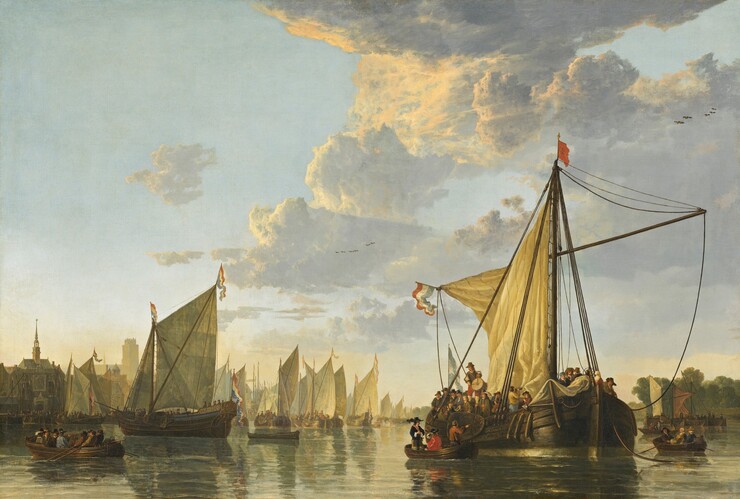

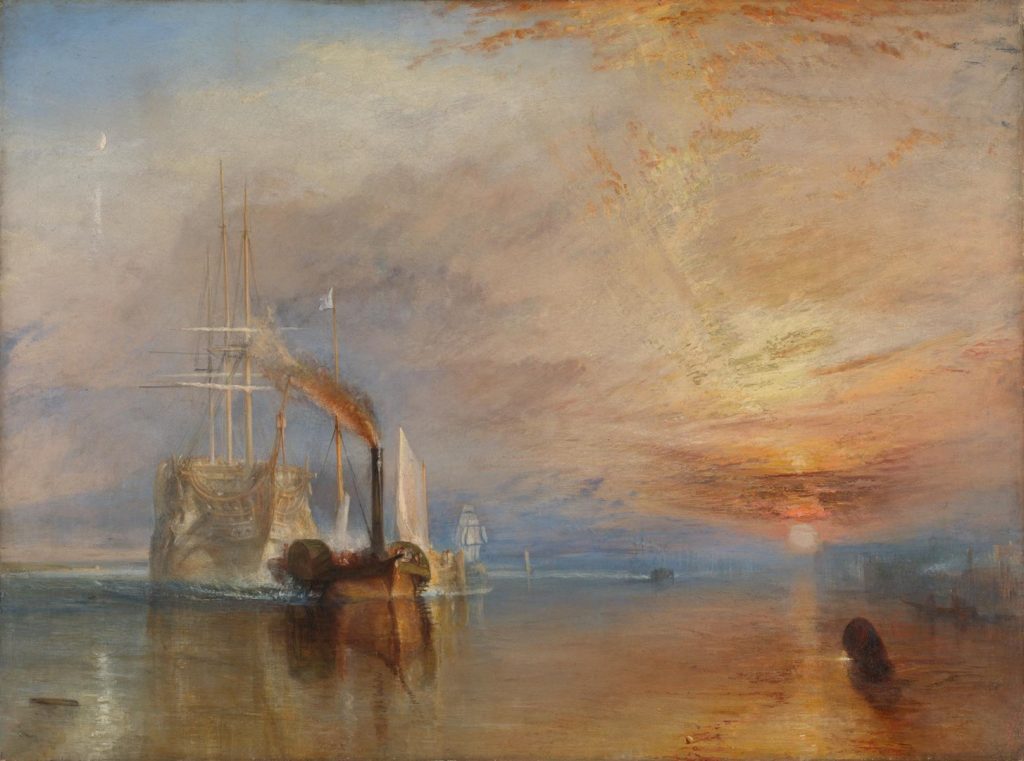
A characteristic of Turner’s work is gradual gradations in the sky. This is a subject we study in the Notan lessons in the Apprentice Program. Systematic gradations add strength to the overall design. When painting overcast clouds, you can use these gradations to improve the abstract design of your painting.
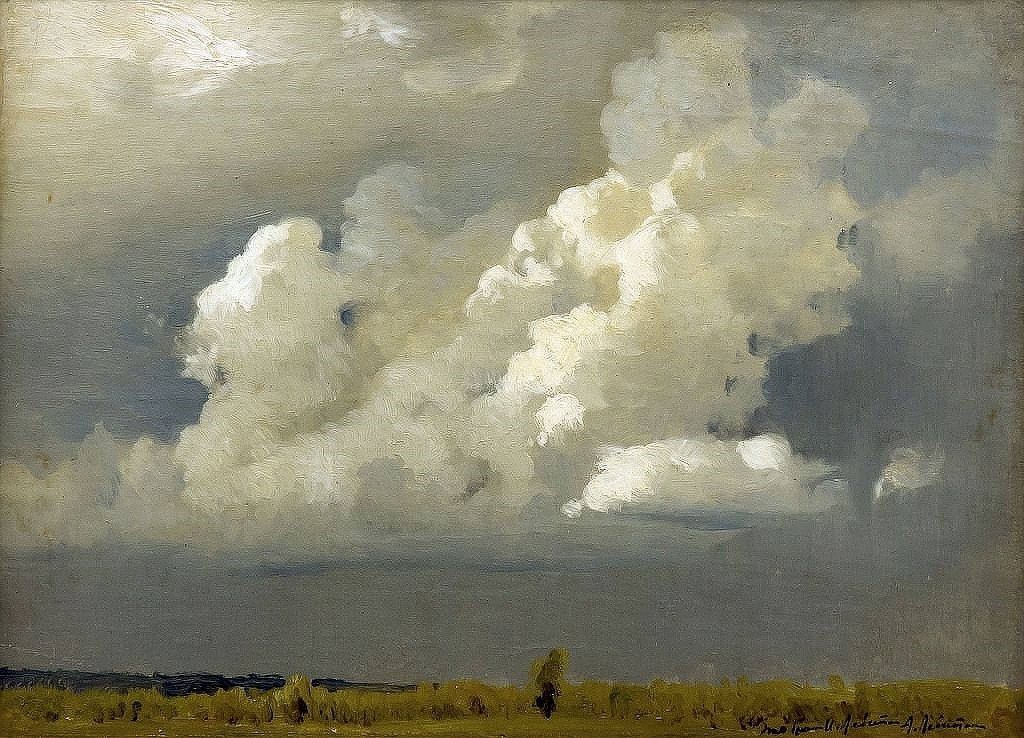
Note the baselines of these cumulus clouds. Pay careful attention to these baselines when painting clouds.
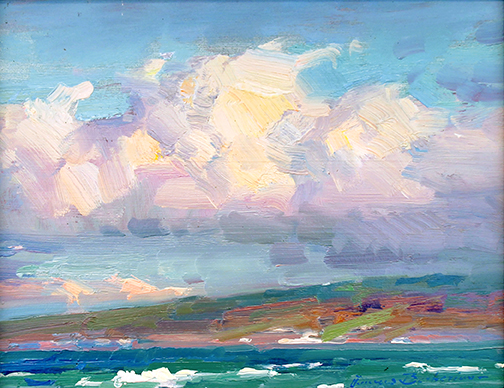
Here is another good example of color change in the half tones of clouds, by the contemporary painter Ovanes Berberian.
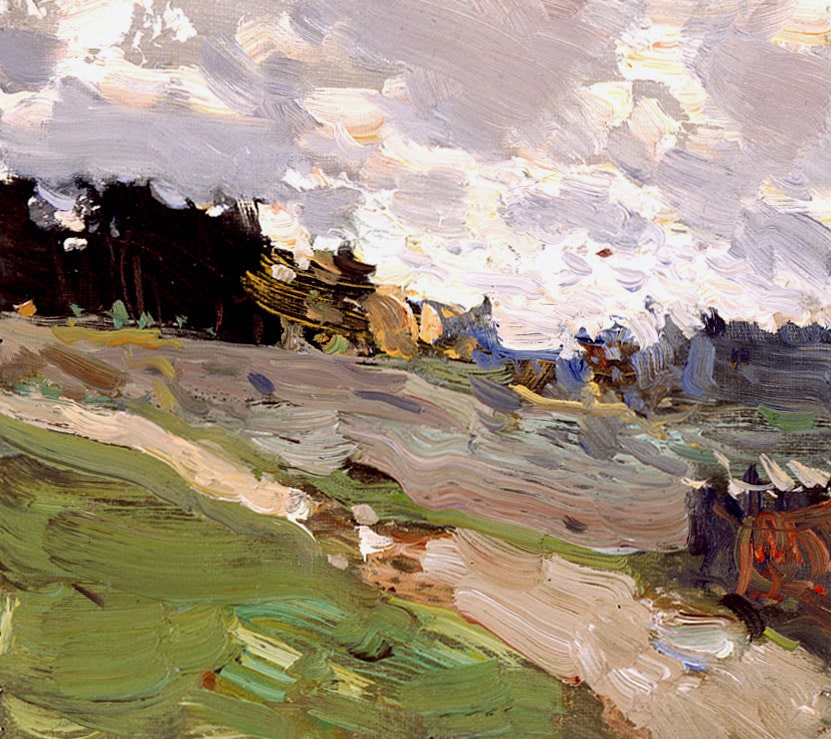
Note the movement in these clouds. Capturing movement when painting clouds adds a lot to capturing the emotion and feeling in a landscape.
To learn more
To learn the observation skills that are critical for all landscape painters such as the effects of atmospheric perspective, accurate color and values, and key shapes to look for when painting clouds, trees, and much more, see the lessons relating to Observation in the Virtual Art Academy® Apprentice Program.
Thank You
Thank you for taking the time to watch this video. I hope you find it useful. If you would like to get free painting tips by email, please sign up for my free tips newsletter.
If you are interested in a structured approach for learning how to paint, take a look at my online painting classes.
Happy painting!
Barry John Raybould
Virtual Art Academy
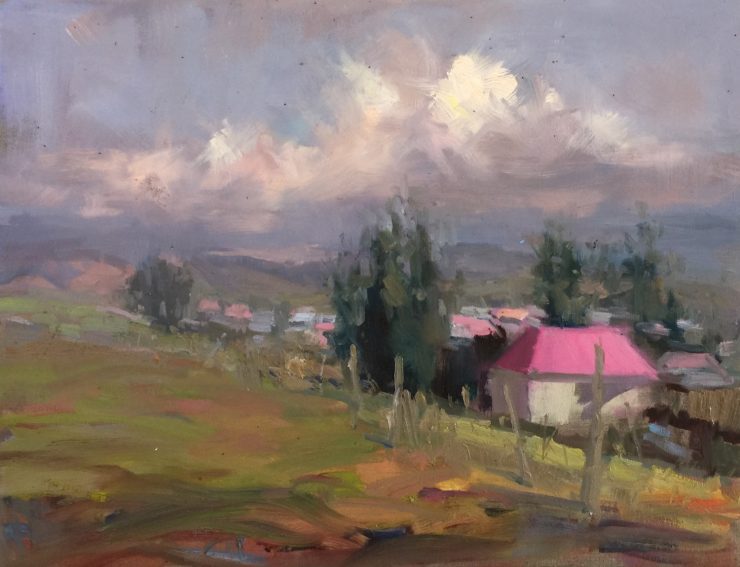
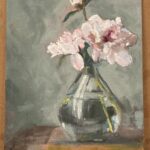



















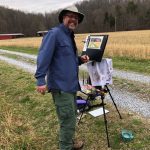




Thanks, truly.
Great points Barry. Hope all is well with you
Awesome and thanks
Thank you for sharing your perceptions about clouds. All your paintings and examples are excellent, too!
Thank you Carole! Glad you like my cloud paintings! I love painting them 🙂
I Love your work and your academy! as soon as I am done with another workshop on painting the ocean, I will sign up. Keep me on your list!
Aloha!
Maria Pacca
Thank you Maria!